The hand saw is a tool that has been around for centuries, and it is still one of the most useful tools that a person can have. It is a simple tool, but it is one that can perform many different tasks.
While there are different types of hand saws on the market, almost all of them have the same basic parts. Knowing the parts of a hand saw will obviously give you a clarity about what you are doing with a hand saw and enhance your knowledge about handsaw functions.
It is used to cut wood pieces into smaller sizes and shapes. They are also known as panel saws, but hardly anyone calls them by this name. Since ancient times, hand saws have been in use for cutting wood.
See also: Types of Hand Saws | How to Use a Hand Saw

This tool has a timeless design, and nothing has changed that much. A typical hand saw has 12 parts. Let’s start from the bottom:
- Handle
- Grip
- Heel
- Saw Nuts
- Lower Horn
- Upper Horn
- Back
- Front
- Blade
- Teeth
- Toe
- Hole
Handle

Depending on the type of hand saw and its application, you will see different types of the handle with varying sizes. Even though the saw handles come in different shapes, they have the same function.
Function: You hold it in your hand, and this provides you with a solid grip of the tool. You then move the saw back and forth to cut through the material. The more you move the saw back and forth, the more you will be able to cut the material.
Grip



The grip is the area where your fingers are placed. You will see different types of grips on different types of hand saws.
Function: The main purpose of the grip is to provide a comfortable place for your fingers. It also keeps your fingers close to the blade so that you can have more control over the tool.
Heel



The heel is the part of the hand saw that is closest to the handle.
Function: The heel is used as a fulcrum point. This is the point where you will exert more pressure when cutting through tougher materials.
Saw Nuts
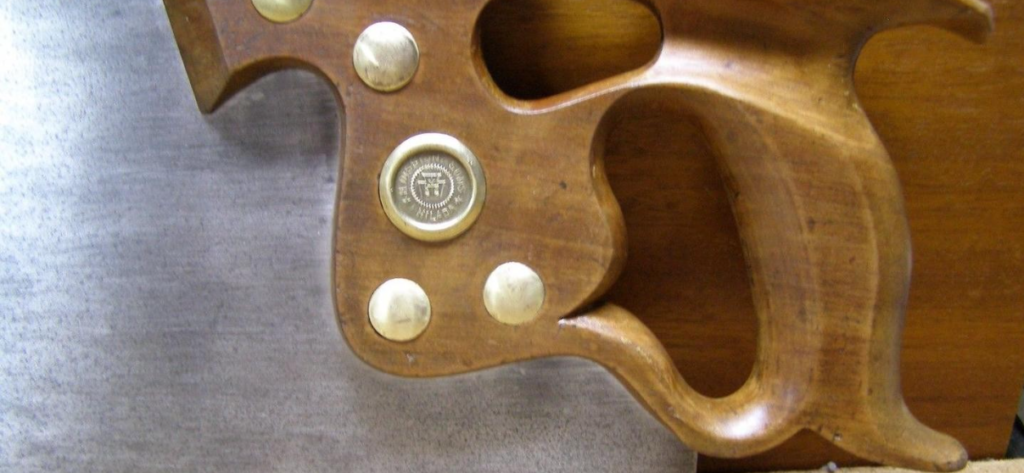
These are small metal pieces that are located at the top of the blade near the teeth.
Function: They are used to secure the blade to the handle. Over time, they may become loose, and you will need to tighten them.
Lower Horn

The lower horn is located at the bottom of the blade near the heel.
Function: It acts as a counterweight and helps to balance the saw while you are using it.
Upper Horn
The upper horn is located at the top of the blade near the teeth.
Function: It also acts as a counterweight and helps to balance the hand saw while you are using it.
Front & Back
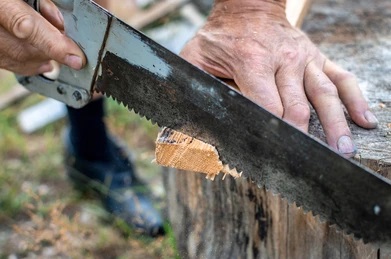
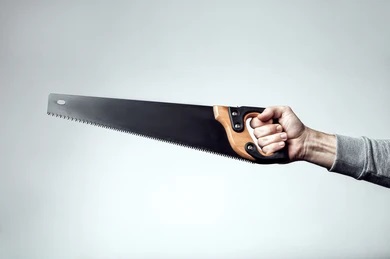

To determine the front and back of the saw, you will need to look at the blade from the side. The top portion that is smooth is called the back, and the bottom portion of the edge where the saw’s teeth are is referred to as the front of the blade.
Function: Back provides stability to the blade and prevents it from bending while you are using it. And Front is responsible for doing most of the cutting.
Blade
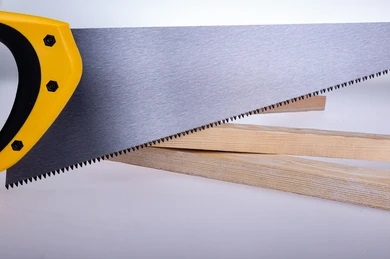
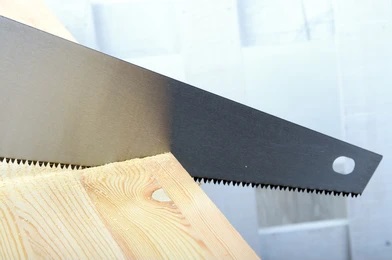
After grip comes the blade. Most saw blades are typically made using solid steel. The blade has a lot of functions, and just like the handle, the blade comes in several different shapes depending on the hand saw type.
Function: It’s the job of the blade to penetrate into the material. To do that, the blade has teeth with varying angles. They are sharp and runs along the blade’s bottom edge.
Teeth
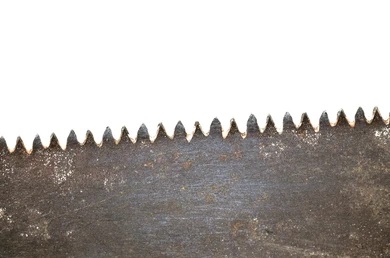
They are sharp metal pieces that are found on the front of the blade. The number of teeth on a hand saw will depend on its purpose. For example, a crosscut saw will have more teeth than a rip saw.
Function: They are used to cut through different materials such as wood, plastic, or metal.
Toe & Hole
The toe is located at the bottom end of the blade near the heel, and the hole is located at the top of the blade near the teeth.
Function: The toe is used to start the cut, and the hole is used to hang the saw when not in use.
Frame
Some hand saws like the ones that are used for cutting metal, i.e., a hacksaw, has a different frame. You can replace the blade of a hacksaw. That being said, you can replace the blade from any handsaw.
See also: Types of Hand Saws | How to Use a Hand Saw
Do you want to know how hand saws are made? Well.. here is a very interesting and informative video for you:
Frequently Asked Questions
How do I know if my hand saw is sharp enough?
If the saw is unable to cut through the material, then it is not sharp enough. You will need to sharpen it.
What type of handsaw should I use for cutting through metal?
A hacksaw is the best type of saw to use for cutting through metal.
What is the difference between a rip saw and a crosscut saw?
A rip saw has fewer teeth and is used for making rip cuts. A crosscut saw has more teeth and is used for making crosscuts.
How do I clean my hand saw?
You will need to clean the blade after each use. Use a brush to remove any dust or debris that may be on the blade. You can also use a cloth to wipe it down.
Final Words
Now that you know a little more about the function of each of the parts of a hand saw, it might be helpful to think about what type of saw is best for the job you need done.
If you’re cutting through hard materials like metal or stone, you’ll need a different saw than if you’re just doing some basic woodworking. But no matter what type of saw you need, remember to always use proper safety precautions!
Have a good day folks!
- Best Miter Saw For Beginners & Amateurs (Updated 2023) - May 7, 2022
- Best Table Saw Miter Gauge Reviews in 2023 - March 12, 2021
- What is the Function of Each of the Parts of a Hand Saw? - January 27, 2021
